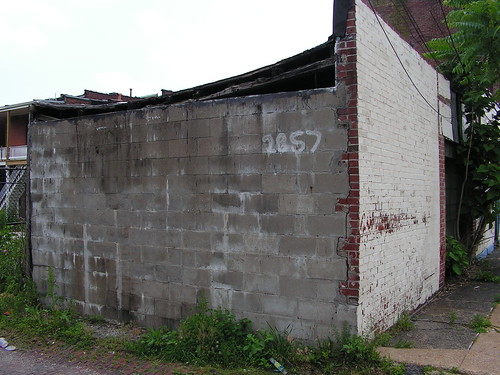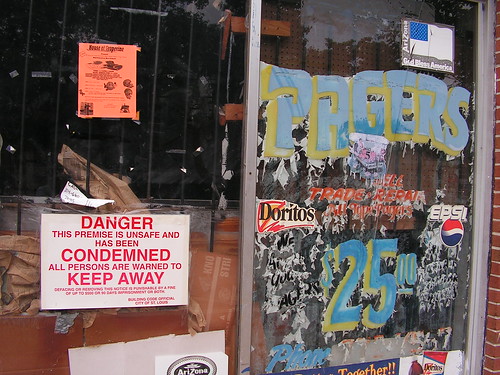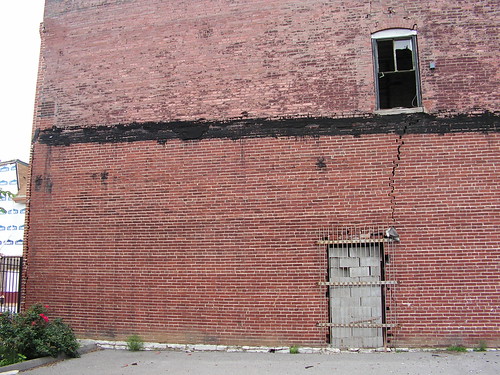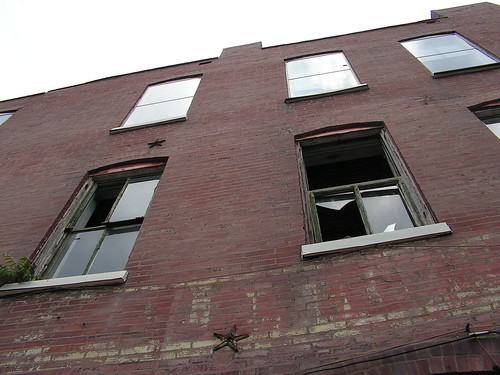Brick by Brick: 2857 Cherokee Street
At the West end of the Cherokee Station Business District lies a three story brick storefront property. Ruined by years of neglect, this rotting structure stands in defiance of being utterly forgotten by its owners.
The city finally issued a condemnation notice last week. The door had been kicked in by vagrants, unmasking the internal ruin. This debris-filled stairwell degrades right inside of the front doorway. Plainly visible to any passerby; and enticing to anyone needing a free place to stay the night.
Saint Louis doesn’t need to be losing any more buildings, that goes especially for 107 year old brick storefronts. South City has done a remarkable job of avoiding the wholesale tear-downs that ravaged North City. South City has thoroughly rejected bulldozers and the McKee’s that circle over them. Thanks to dedicated landlords, an undaunted Alderman, energetic entrepreneurs and activists, and a sprinkling of idealistic artists Cherokee Street has managed to save, restore, and invigorate its numerous historic buildings.
2857 is the only building within the mixed-use/commercial district in the shape it’s in.
20th Ward Alderman Craig Schmid, once contacted about the property’s condemnation, committed to finding what resources the city has in getting the property into the hands of a responsible developer.
The situation is ripe for a community-driven rehab project. As a resident and proprietor on Cherokee Street, I have a vested interest in seeing this building reconstructed. Other stakeholders, business owners and residents, have expressed interest in pooling what resources they have to save this building.
To be sure, this is a major job. The structural report states plainly that whole walls will need to be relaid. Internal damage is severe, water has had nearly every window open to its invasion. Plants have managed to grow from the windowsills and a tree has sprung out of the garage.
This post is a call for more involvement. Brick by Brick Saint Louis needs to be preserved. If you are a rehabber, a member of the Cherokee Street community, or simply a fellow Saint Louisan dedicated to the preservation of architectural history I ask that you join this project.
For more information on how to get involved please contact me.  With enough volunteers we can start putting together an organization and a plan to save this building.
Update: Before I’ve even managed to post the first installment, new developments have arisen. On Saturday, June 20th, workmen were spotted making superficial fixes on the building. A real door has been placed in the front; no other changes are visible.
Photos provided by Cranky Yellow’s photographer Amanda Beard; www.amandabeardphotography.com. All rights reserved.
– Angelo Stege






